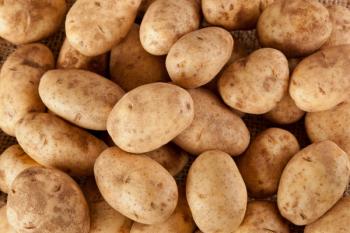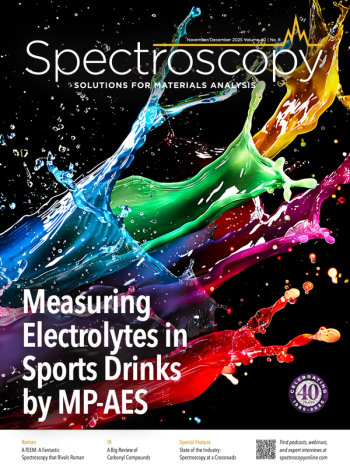
New Advances in Meat Authentication: Spectral Analysis Unlocks Insights into Lamb Diets
A recent study published in Meat Science highlighted how visible and near-infrared (vis-NIR) spectroscopy, when combined with chemometrics, can differentiate lamb meat based on pasture-finishing durations.
Food authentication is an integral part of the production process. A recent study published in Meat Science explored how visible and near-infrared (vis-NIR) spectroscopy combined with chemometrics can help distinguish between lambs based on their pasture-finishing durations (1). The findings in this study reveal the utility of vis-NIR spectroscopy in food authentication (1).
Sheep-producing operations are not as abundant as they once were, but they still play a vital role in the agriculture sector. According to the U.S. Department of Agriculture, there were fewer than 80,000 sheep operations in the United States as of 2012, compared to over 105,000 in 1990 (2). This represents a significant decline over the 22-year period. Although the sheep industry is less than 1% of U.S. agricultural receipts, it still plays a key role in the economies of several U.S. states, especially in Texas and California (2).
In this study, which was led by Sophie Praache and her team from Université Clermont Auvergne and INRAE, France, the application of vis-NIR spectroscopy and chemometrics helped authenticate livestock diets (1). Analytical techniques, such as chemical and chromatographic techniques have been used for this purpose before, but these techniques also are complicated, labor-intensive, and destructive to the food samples under study (3). Spectroscopic techniques offer researchers rapid, low-cost, efficient, and non-destructive ways to evaluate food authenticity (3).
Praache and her team focused on perirenal adipose tissue (PAT) and caudal adipose tissue (CAT) in lambs to explore how their vis-NIR spectral profiles change based on diet. For their study sample, they compiled four groups of 50–55 lambs. These lambs were pasture-finished on lucerne for various durations, starting at zero days and going up to 21-day increments, stopping at 63 days (1).
Once the lambs were slaughtered, the researchers used partial least squares discriminant analysis (PLS-DA) to look at the spectral differences between the samples. The researchers two main objectives were to see whether PAT and CAT spectra could reliably distinguish lambs based on pasture-finishing duration and assess how quickly the lucerne pasture signature appears and stabilizes in the vis-NIR spectra (1).
One of the main challenges the researchers encountered in the study was discriminating between lambs into four groups based on pasture-finishing durations (1). The study achieved classification accuracy of less than 62% for individual adipose tissues, which means that precise differentiation by pasture duration requires further refinement in spectral analysis techniques (1). The authors also acknowledged that they did have limitations in group-specific classification, and the sample size was small (1).
However, some encouraging results did emerge from the study. The PAT spectra achieved an accuracy of 93.8%, which was high, and the CAT spectra followed closely, with an accuracy of 87.5% (1). These results indicate that vis-NIR spectroscopy was mostly successful in identifying pasture-fed animals compared to those raised on a concentrate-based diet (1).
This study marks a significant advancement in livestock diet authentication, demonstrating the potential of Vis-NIR spectroscopy as a non-invasive and efficient tool for verifying pasture-fed claims. Accurate classification of meat based on diet could enhance consumer trust, combat food fraud, and support sustainable farming practices (1).
However, the research also highlights the need for further investigation. Longer and shorter pasture-finishing durations should be explored to pinpoint the exact timeframe for the pasture signature to fully stabilize in different tissues (1). Additionally, external validation with new data sets is essential to confirm the robustness of the current models (1).
References
- Rey-Cadilhac, L.; Andueza, D.; Prache, S. Visible-NIR spectroscopic Authentication Assay for the Classification of Lamb Meat According to Pasture-finishing Duration. Meat Sci. 2025, 219, 109670. DOI:
10.1016/j.meatsci.2024.109670 - Hahn, W. Sheep, Lamb & Mutton – Sector At A Glance. USDA.gov. Available at:
https://www.ers.usda.gov/topics/animal-products/sheep-lamb-mutton/sector-at-a-glance (accessed 2025-01-22). - Chaudhary, V.; Kajla, P.; Dewan, A.; et al. Spectroscopic Techniques for Authentication of Animal Food Origins. Front. Nutr. 2022, 9, 979205. DOI:
10.3389/fnut.2022.979205
Newsletter
Get essential updates on the latest spectroscopy technologies, regulatory standards, and best practices—subscribe today to Spectroscopy.



